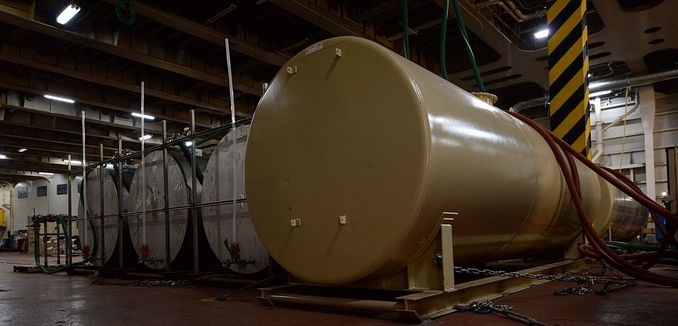The Syrian government of Bashar al-Assad has once again missed a deadline in the process of ridding itself of chemical weapons. As of April 27, Syria was still in possession of roughly 7.5 percent of its chemical weapons stockpile. April 27 was the date Syria had agreed to have removed all of it chemical weapons.
The Syrian government had agreed to complete the export or destruction of about 1,200 tons of chemical agents by April 27 after missing a February deadline, but by Sunday, it had shipped out or destroyed 92.5 percent of the arsenal, said Sigrid Kaag, the coordinator of the joint mission by the United Nations and the watchdog agency the Organization for the Prohibition of Chemical Weapons.
Syria had made significant progress but must “take the final step very soon” to purge the remaining 7.5 percent of the arsenal, Ms. Kaag told reporters in Damascus, according to a report on the United Nations news service website. It was unclear from the report what chemical, or chemicals, were in the remainder.
In the wake of last year’s chemical weapons attack against a suburb of Damascus, Syria agreed to become a signatory to the chemical weapons treaty and agreed to destroy its stockpile of chemical weapons and its ability to produce them under the threat of American led military action. The Organization for the Prohibition of Chemical Weapons (OPCW) has supervising the removal the prohibited weapons since the agreement.
For months Syria lagged behind the necessary pace to destroy and remove its chemical arsenal. Even though the Assad regime has picked up the pace in recent months, questions about the deal persist. Some critics charged that the logistics of the chemical removal would effectively help the the Syrian government in its battle against the rebels. Recent reports of chemical attacks suggest that Syria, even if in compliance with the letter of the treaty, is violating its spirit by using dual use chemicals against civilians to incapacitate them.
In a statement Tuesday to a meeting of the OPCW, United States Ambassador Robert P. Mikulak broached other reasons to distrust Syria, including Syria’s refusal to destroy twelve facilities that had been used for producing chemical weapons.
Despite the destruction deadlines established in this Council by consensus, twelve chemical weapons production facilities declared by Syria remain structurally intact. Why is that? The answer is Syria’s intransigence and refusal to even discuss the matter with other delegations over the past weeks. The Technical Secretariat has helpfully contributed its expertise, but it cannot negotiate a final document in place of this Council. The United States continues to hope that a mutually acceptable approach can be found in the near future, but Syria must come to the table to discuss possible approaches. Our delegation is ready to actively and constructively participate in discussions to reach an acceptable solution.
Unfortunately, Syria’s position seems to be that the destruction requirements should be substantially lower for Syria than they were for other countries. This cannot be the case, especially in light of the Syrian regime well demonstrated willingness to use chemical weapons. In 2001, for example, the Technical Secretariat informed the United States that “any underground structure designated for locating any equipment related to the CWPF shall also be destroyed or filled in, and provided with permanent cover.” The same requirement should apply to underground structures in Syria. In its 27 September decision, this Council made clear that the Syrian CW situation demanded stringent verification measures and, to that end, we must ensure that these facilities can never be used by the Syrian regime to retain or restart a chemical weapons program.
[Photo: Todd Lopez / WikiCommons ]




